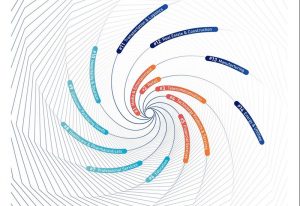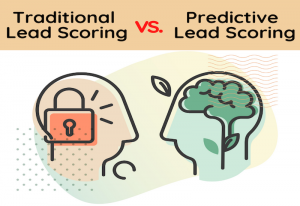Imagine you are a fisherman trying to catch fish in a big lake. Wouldn’t it be so much more efficient if you knew exactly where the fat fish was so that you could throw your net at the right spot, instead of blindly going across the entire lake hoping to get lucky?
The sales team’s job is like that of a fisherman’s dilemma. You get thousands of sales leads every month from multiple sales and marketing channels. But how do you identify which ones of these leads are most likely to convert into paying customers, so that you can devote your sales effort towards those specific leads?
Equally importantly, if you could identify upfront which of these leads are not likely to convert into sales then you can avoid chasing ghosts and save precious sales effort.
The traditional approach to grading sales leads has been to define some rules (e.g. demographic profile) and devote sales efforts based on these rules. However, this rule-based approach carries human biases. It is impossible for humans or traditional computing algorithms to run through hundreds of thousands of profiling and behavioral parameters of existing and potential customers to figure out which specific combinations of parameters result in high probability of conversions. This is where Machine Learning and Deep Learning AI models come into play.
A typical AI-based approach for identifying high potential leads consists of 3 key steps:
Step 1 – Identifying relevant parameters:
You start by identifying, categorizing, and normalizing relevant data parameters using various data science techniques, like –
- Collection of data or attributes from the given sources
- Understanding the meaning of the collected attributes and disregarding those that have no contribution
- Categorizing data based on the different data types
- Understanding the correlation factor among attributes and target variables.
Step 2 – Training AI models on historical data:
Multiple machine learning and deep learning models are run to train on historical data. This minimizes dependencies on any single approach. Some of the steps involved in this stage are as follows:

- Split the data into a ratio of 70%:15%:15% (this can vary depending on the situation) as Training data: Validation data: Testing Data.
- Build a multi-model classification strategy so that one does not have to depend on only one approach. Some effective techniques that can be used are:
- ML -> Random Forest Classifier/XGBoost etc
- DL -> Deep Learning architecture (combination of convolution 1D /Dense Layers/ Maxpooling with activation functions as Relu/sigmoid).
- Decide classification threshold.
The model outputs need to be tested for accuracy and modified with hyper-parameter tuning approaches like Keras Tuner. Some of the methods that can be used to validate the accuracy of the model are:
- Model accuracy and Model loss curve convergence
- ROC Curve
- Confusion Matrix
- F1-Score
Step 3 – Implementation of the model on live data:
After the data accuracy is established, the model is inserted into live sales lead funnels so the same can be used by sales teams in real-life scenarios. Depending on the specific client use case, the model scripts can be programmed to run multiple times a day to process the new leads on a near real-time basis. High probability leads are identified and allocated to the respective sales team members as per their sales workflow.
Client Implementation Example
The company in this use case is an online B2C company that gets thousands of leads every day but only about 1% of them are converted to paying customers. This meant that the company was spending an immense amount of sales conversion effort on converting a small proportion of leads.
This is where our AI model turned the table on the previous lead conversion rate by successfully identifying the creamy layer of the top 35% leads that accounted for >90% of paid conversions. Just as importantly, the model identified the bottom layer of not–likely–to–convert leads with 99.99% accuracy.
The model also provided personalized guidance on the specific product offerings that each one of these potential clients would be interested in. This helped the sales and marketing teams to approach these prospects with just the right pitch.
By implementing this model to feed into the sales and marketing workflow, the company was able to focus its sales efforts on the right quality of leads with the right pitch and increase organic sales conversions by 40% within 4 months.







